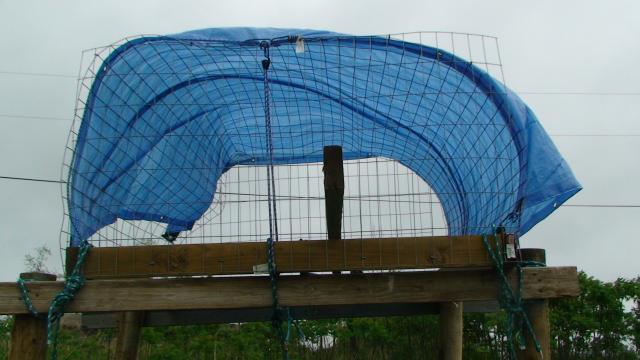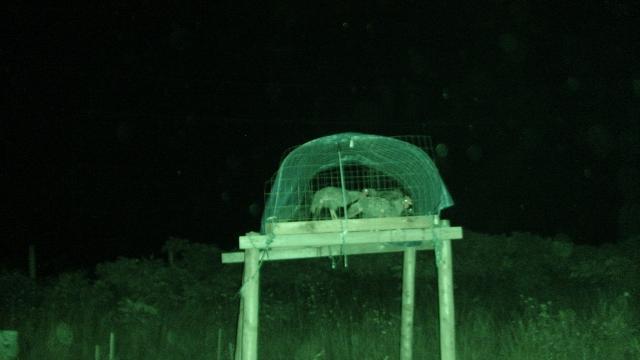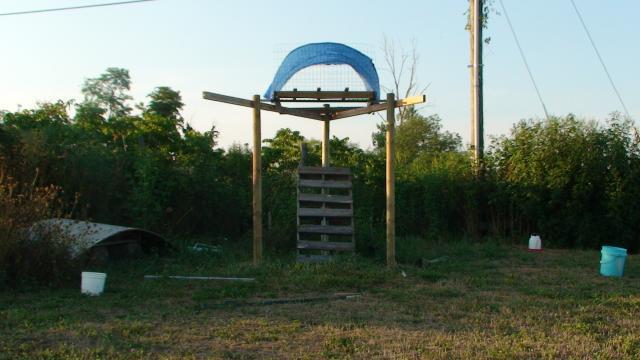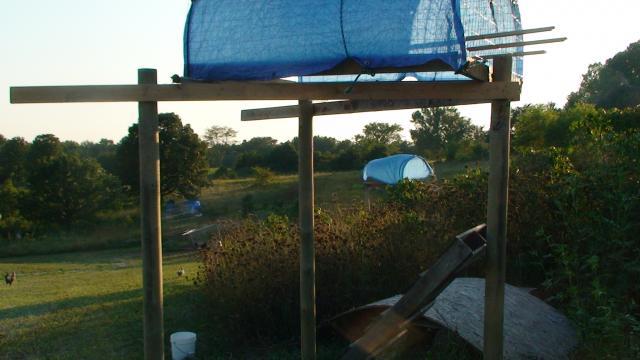This production season I intend to put up roosts (multiple) in a row that will be used by groups / broods differing in age by approximately 28 days. Each roost will have a separate access point and roof. Broods will be introduced to roost when about 28 days old just before they can be expected to roost on horizontal pole. I have a reliable way to get birds imprinted on roost so as to prevent everyones favorite problem of having birds roosting all over place on ground. Logic is to prevent broods of older birds from interfering with younger birds acquiring roost (interbrood strife). I have a dog now but he will not protect against heavy rain and cold summmer nights nor will he be able to keep every single oppossum out that is interested in a midnight chicken snack. Social strife I am concerned with is within a brood (intrabrood) were last individuals going to roost poles have a hard time finding an unoccupied spot. Goal is to get spots on roost poles filled with minimal fuss in process. Excess fuss reduces sensitivity of my alarm system.
Roost poles roughly 8 feet above ground are above a platform roughly 2 feet below (6 feet above ground). Birds have to fly two legs (each 3 feet) to get from ground to platform. Except for starting point on ground, a bamboo pole serves as launch and landing point for each leg. Platform is porous to allow feces to fall onto tarp on ground for collection. I want to poo for garden.
What eludes me is how much roost pole length is needed per bird and if some pattern other than parallel can be used to promote late comers having access to roosting spots. Any ideas about how roost poles might be arranged? I wish to keep them in same plane so birds do not crap on each other.
Roost poles roughly 8 feet above ground are above a platform roughly 2 feet below (6 feet above ground). Birds have to fly two legs (each 3 feet) to get from ground to platform. Except for starting point on ground, a bamboo pole serves as launch and landing point for each leg. Platform is porous to allow feces to fall onto tarp on ground for collection. I want to poo for garden.
What eludes me is how much roost pole length is needed per bird and if some pattern other than parallel can be used to promote late comers having access to roosting spots. Any ideas about how roost poles might be arranged? I wish to keep them in same plane so birds do not crap on each other.












